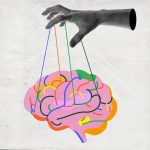Here are ten ways teachers can use AI to teach better:
AI can help teachers create personalized learning experiences for each student. By analyzing data on student performance and behavior, AI can provide insights into individual learning styles and preferences and suggest personalized learning strategies and activities. It can also help students create adaptive assessments that adjust the difficulty level of questions based on a student’s performance. This can help teachers identify areas where students need additional support and provide more targeted feedback.

Here are ten ways teachers can use AI to teach better:
AI can help teachers create personalized learning experiences for each student. By analyzing data on student performance and behavior, AI can provide insights into individual learning styles and preferences and suggest personalized learning strategies and activities. It can also help students create adaptive assessments that adjust the difficulty level of questions based on a student’s performance. This can help teachers identify areas where students need additional support and provide more targeted feedback.
Intelligent tutoring systems:
Intelligent tutoring systems can be created by AI and have the potential to provide students with personalized feedback and support. These systems can use natural language processing and machine learning to adapt student questions and provide answers and explanations. With the power of technology moving at a phenomenal pace, it is thought that AI-powered virtual assistants can help teachers with tasks such as grading, lesson planning, and administrative tasks. These assistants can provide personalised recommendations and insights based on data analysis.
AI can also be used to analyze student data and predict future performance. This can help teachers identify at-risk students and provide targeted and early interventions to improve outcomes. Through the power of AI-powered natural language processing, AI has been identified to support teachers in analyse student writing and speaking which can help teachers identify students’ needs and additional support.
Augmented reality and virtual reality:
AI can be used to create immersive learning experiences through augmented reality and virtual reality. This can help students visualize complex concepts and engage with subject matter in an interactive and experiential way. Through AI-powered language translation, teachers have the tools to work with students who speak different languages. This can help create a more inclusive learning environment and facilitate communication and collaboration among students from diverse backgrounds.
AI-powered data analytics have the potential to help teachers analyze student data and identify patterns and insights that can inform teaching strategies and improve student outcomes. This can help teachers make data-driven decisions and provide targeted interventions to support student learning.
Some examples of AI Powered Platforms assisting with personalized learning
- Edmentum: Edmentum is an AI-powered platform that provides personalized learning experiences for students. The platform uses machine learning algorithms to analyze student data and provide personalized learning recommendations.
- Thinkster Math: Thinkster Math is an AI-powered math tutoring program that provides personalized learning experiences for students. The platform uses machine learning algorithms to analyze student performance and provide customized learning suggestions.
- Grammarly: Grammarly is an AI-powered writing assistant that provides real-time feedback on grammar, spelling, and syntax. The platform uses natural language processing and machine learning algorithms to analyze student writing and provide feedback.
- Nearpod: Nearpod is an AI-powered platform that provides interactive and engaging learning experiences for students. The platform uses data analytics to track student engagement and provide data engagement statistics.
- Quizlet: Quizlet is an AI-powered study tool that uses machine learning algorithms to create personalized study materials for students. The platform uses data analytics to track student progress and provide targeted feedback.
- Duolingo: Duolingo is an AI-powered language learning platform that provides personalized learning experiences for students. The platform uses machine learning algorithms to analyze student performance and provide bespoke learning pathways.
- Squirrel AI: Squirrel AI is an AI-powered tutoring program that provides personalized learning experiences for students in math, science, and English. The platform uses data analytics and machine learning algorithms to identify student strengths and weaknesses and provide targeted interventions.
- IBM Watson Education: IBM Watson Education is an AI-powered platform that provides personalized learning experiences for students. The platform uses natural language processing and machine learning algorithms to analyze student data and provide targeted interventions.
- Turnitin: Turnitin is an AI-powered plagiarism detection tool that helps teachers ensure academic integrity in student writing. The platform uses natural language processing and machine learning algorithms to identify potential instances of plagiarism.
These are just a few examples of the many AI-powered tools available to teachers today. By leveraging these tools, teachers can create tailored, engaging, and effective learning experiences that meets the needs of individual students to improve overall student outcomes.








